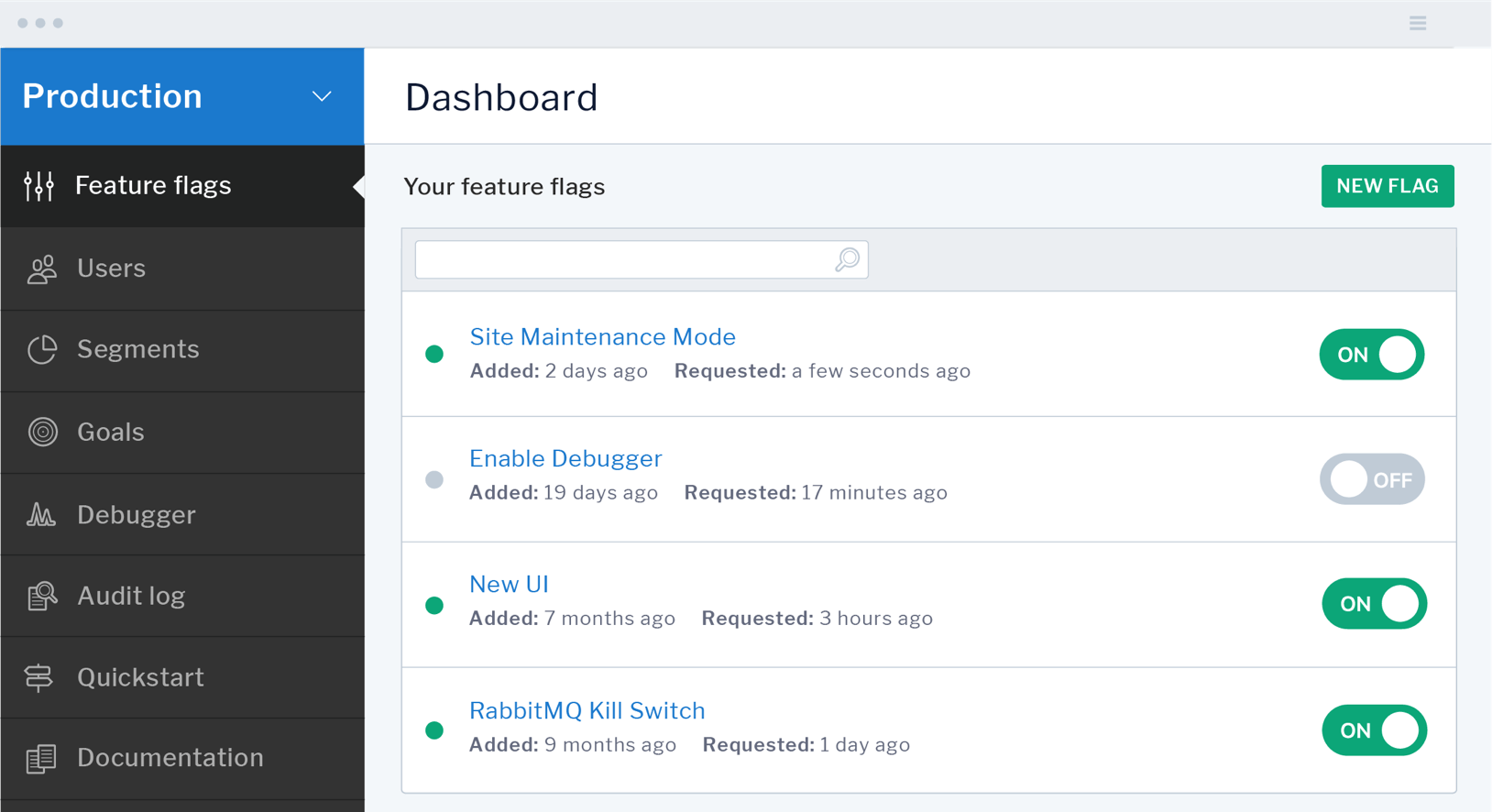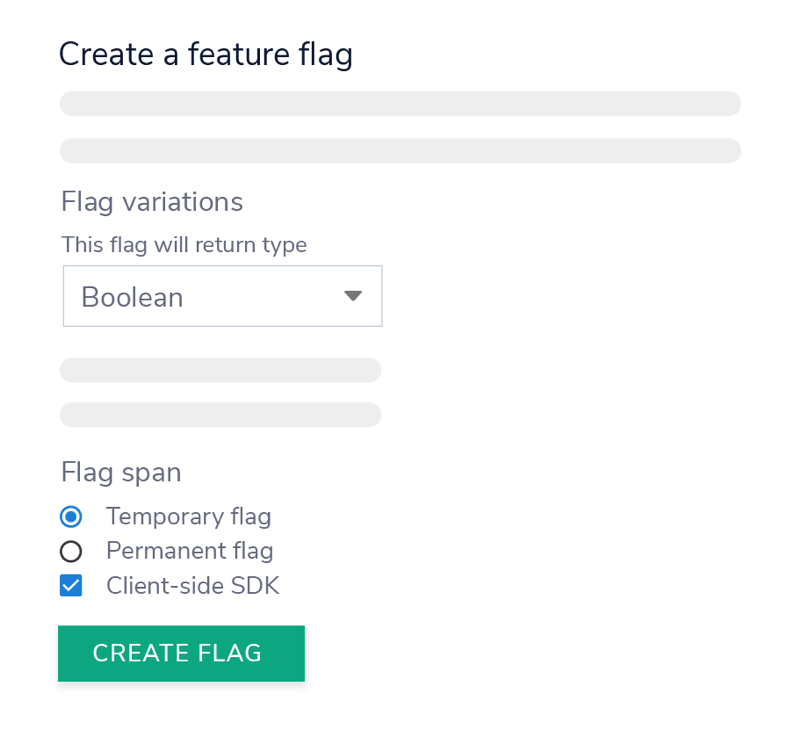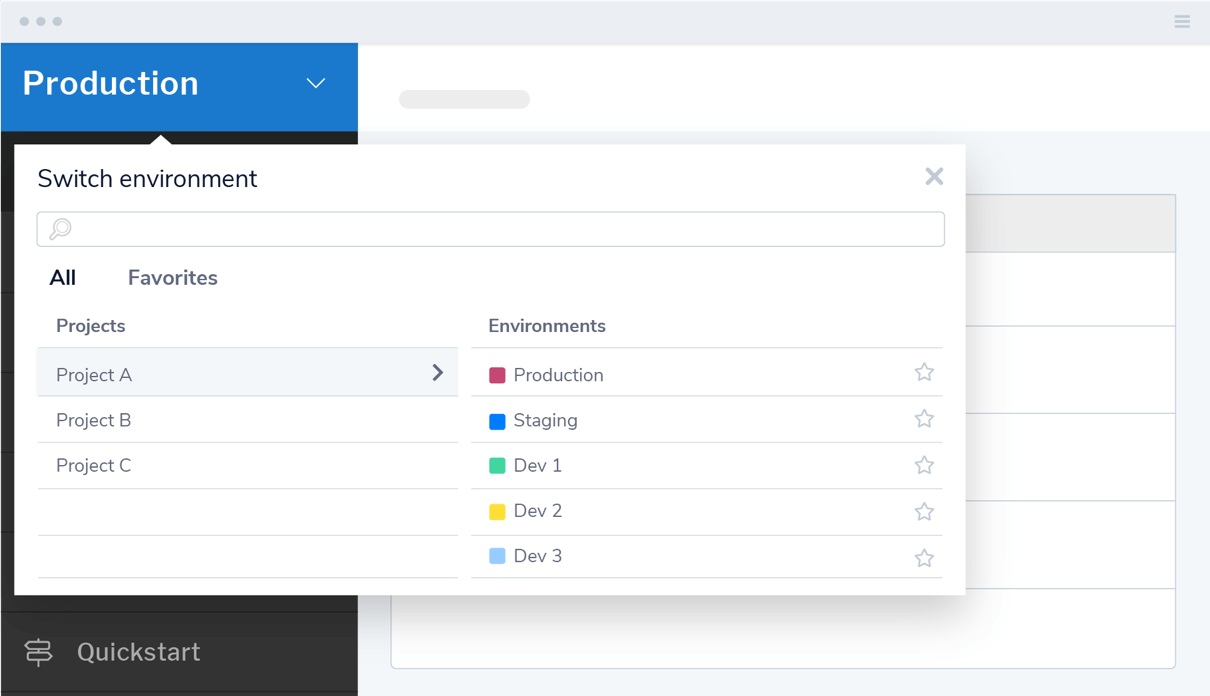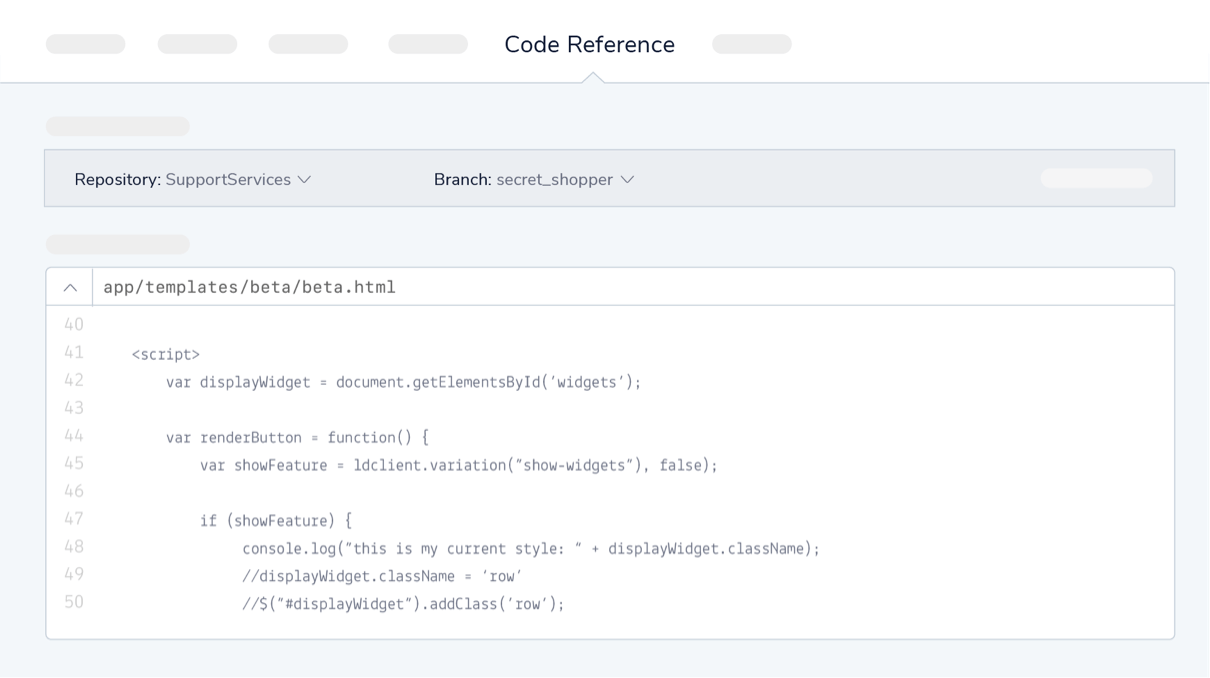Flags for Modern Development
These aren't your old school, run of the mill on/off feature flags. LaunchDarkly feature flags are cross-platform supported, multi-lingual and updates are delivered consistently across all your services in real-time, without introducing any latency to your site.

SDK Powered
All LaunchDarkly feature flag updates and evaluations are handled automatically by our SDKs. We have SDK support for every major programming language so that you can embed LaunchDarkly into your server, client, and mobile applications. Plus, our feature flags are cross-platform and multi-lingual, so there’s no need to implement multiple flags based on device or language.
Stored Locally
After our SDK initializes, all your feature flag rules are stored locally in memory. This allows you to process millions of evaluations, without introducing latency in your services, since you don't have to run a query against a separate database or call back to LaunchDarkly at the time of a flag evaluation. You can even add an additional layer of reliability by using one of our local storage options with our SDKs.
Real-time Updates
Our unique streaming architecture means you can instantly turn features on/off when you need to without introducing any latency to your site. It only takes 200 milliseconds to propagate flag updates.
Consistent Experience
Whether you’re updating a new feature for end-users or migrating a microservice to a new provider, we understand the importance of keeping your environments consistent. Our streaming architecture ensures every change you make is dispersed to every user and microservice in real-time. No more waiting and wondering if the changes you requested have actually propagated across all your servers.

Oversight & Control
Feature flagging is not a new concept. For decades development teams have utilized feature flags to control the release of new features to their end users. Starting to feature flag isn't hard, but managing feature flags at scale with granular control over who sees what is. Our real-time feature flags give you the confidence to ship code faster without the worry of severely impacting your users.
Intuitive UI
Our easy-to-use user interface puts the power of feature flags into anyones hands, not just developers. Less technical stakeholders from product, marketing or client services can now play a role in your feature management practices without fear of them causing a product incident.
Access Controls
Create flexible policies that provide fine-grained access controls to anything in LaunchDarkly from feature flags to A/B testing. Custom roles reduce the burden on development teams by sharing feature release capabilities with less technical stakeholders.
Centralized Dashboard
View and manage all your feature flags across every environment and project all in one central spot. Our platform provides the cross team visibility needed to implement feature management practices at scale without introducing costly technical debt.
Audit Log
Gain critical insights on all the changes made throughout your environments including who made changes, when and the specific code that was updated.
Flag Types
Our feature flags are flexible and extendable to meet any need. Whether you want to slowly launch a new feature, enable a maintenance mode during migration or run a client-side experiment, we’ve got you covered.

Boolean
For situations where the variations are simple, predefined Boolean flags are easy to create and put into your code.
Multivariates
For more complex uses, multivariate flags allow you to define two or more custom variations. These variations can be strings, numbers, JSON objects, or JSON arrays.
Temporary
Mark flags as temporary flags when you intend to remove them after a feature has been fully released to all users. This helps your team reduce technical debt by easily finding and removing unused flags.
Permanent
Mark flags as permanent when you intend to keep them in your code long-term. This helps your team permanently keep flags for things like enabling a maintenance mode or reducing traffic to a specific feature during a major incident or spike in traffic.
Client-Side
Enable flags on your front-end applications using our client-side SDKs for desktop clients and mobile devices: Windows, Mac, iOS, Android, embedded devices etc.
Organization
Implementing feature flagging is easy. But organizing flags can be a pain without the proper system. Our platform helps you keep things organized by storing flags into different projects and environments for cross team collaboration.

Flag Settings
Organize your flags by adding rich descriptions, unique names, and custom tags, then assign a maintainer for cleanup and support responsibilities.
Environments
Manage feature flags on your development, staging, and production instances separately. Each environment has its own separate flag data and API keys.
Projects
Create separate projects for the different products your company supports and manage them all from one LaunchDarkly account. By creating separate projects for things like your B2B application and B2C product you'll be able to create a unique set of environments and feature flags for every project.
Maintenance
We care about developers. That’s why we’ve made it ultra easy to spot if your flags are setup correctly across multiple environments and ensure that cleanup is a breeze so you don’t add technical debt into your code base.
Code References - Identify all the locations within your code base where a particular LaunchDarkly feature flag is being used and automatically update those references with every commit to GitHub, Bitbucket, GitLab or any other Git code hosting tool you're using. The Code References tool helps reduce technical debt by ensuring that you’ve safely wrapped all relevant code in the correct feature flags and makes it simple to find and remove flags when you no longer need them, keeping your code base clean and consistent.
Learn More

Compare & Copy - Compare feature flag configuration settings, including targets and variations, between flags setup in two different environments. This is incredibly useful when comparing and cloning rules from a staging environment into your production environment, eliminating costly manual errors.
Debugger - Quickly verify that your LaunchDarkly flags are set up as intended. If you spot an issue, the Debugger will help you collect additional data and determine if further action is needed.

Sophisticated User Targeting
Our sophisticated targeting rules allow you to test new features safely, in production. Build custom user segments based on any attribute, no matter how granular you need to go.
Target specific users based on built-in LaunchDarkly user attributes like name, email and country or build more complex rules based on multiple custom attributes. Use the LaunchDarkly UI to target users based on any custom attributes that you define, such as entitlement rights from salesforce, outputs from a ML model running on your customer usage data, or enriched demographic data from third-party customer enrichment platforms such as Clearbit.

Sophisticated User Targeting
Our sophisticated targeting rules allow you to test new features safely, in production. Build custom user segments based on any attribute, no matter how granular you need to go.
Built-In & Custom Attributes
Target specific users based on built-in LaunchDarkly user attributes like name, email and country or build more complex rules based on multiple custom attributes. Use the LaunchDarkly UI to target users based on any custom attributes that you define, such as entitlement rights from salesforce, outputs from a ML model running on your customer usage data, or enriched demographic data from third-party customer enrichment platforms such as Clearbit.

User Segments
Identify a group of users to be used in one or more feature flags by creating rules that segment users by specific attributes. Segment rules can help you keep groups like “beta-users” or “enterprise-customers” up to date without having to regenerate a new list for every new feature release.

Percentage Rollouts
Gradually release a feature to a designated percentage of users to reduce risk and assess performance. You can use percentage rollouts to target specific segments like 25% of your “beta-testers” group or 10% of “legacy-users” in the state of California.

Prerequisites
Create conditional feature releases by requiring a flag to only be evaluated if the user meets prerequisites from another feature flag. With prerequisites you can build dependencies into your feature flags and control granular features from a global level.
